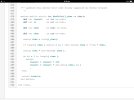Cecil
19+ years progress programming and still learning.
I'm having a brain freeze and I thought I knew how to do this but I just can't think. How do I convert an Integer into a Hexadecimal value?
This is how I thought you can do it:
But 52203 becomes EBCE, but what I was expecting was CBEB

This is how I thought you can do it:
Code:
DEFINE VARIABLE r_RAW AS RAW NO-UNDO.
PUT-UNSIGNED-SHORT (r_RAW,1) = 52203.
MESSAGE CAPS(STRING(HEX-ENCODE(r_RAW))).But 52203 becomes EBCE, but what I was expecting was CBEB


